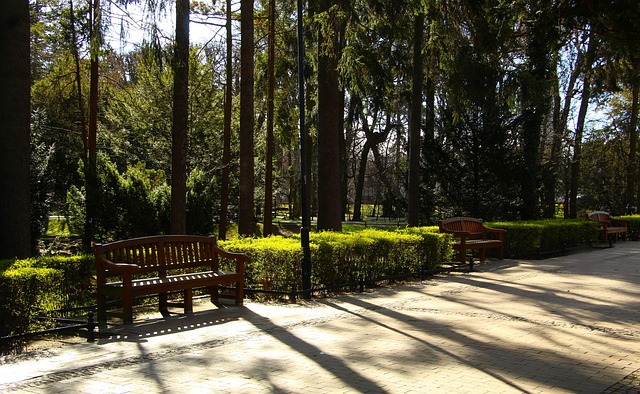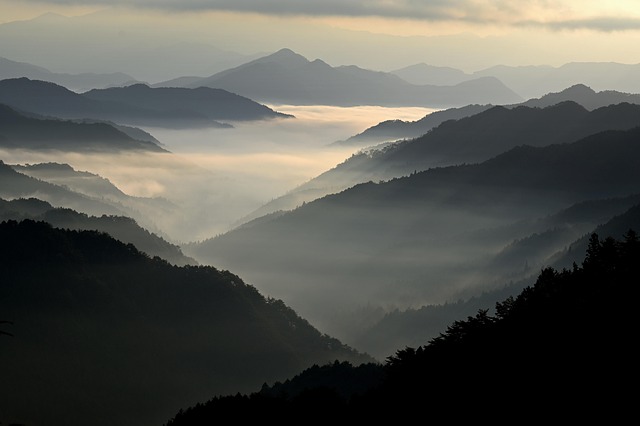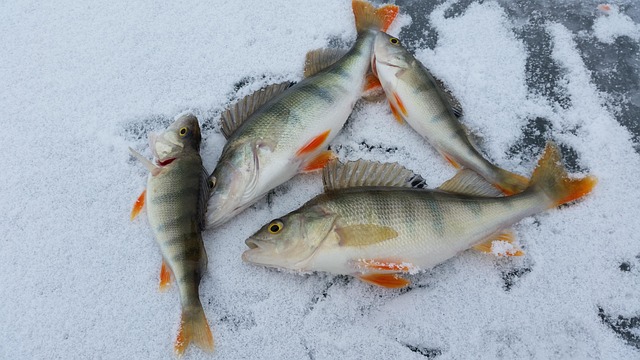Uncover Lane County’s Top Salmon Fishing Secrets

Lane County, Oregon, is a prime destination for salmon anglers, offering multiple rivers rich in Chi…….
We are At Your Service
In the heart of the Pacific Northwest lies Lane County, Oregon, a region renowned for its breathtaking natural beauty and thriving fishing industry. At the forefront of this vibrant ecosystem is salmon fishing, an activity that has captivated anglers and supported local economies for generations. This article delves into the intricate world of salmon fishing in Lane County, exploring its historical roots, current practices, global impact, and future prospects. By the end, readers will gain a comprehensive understanding of why this region is considered a top destination for salmon enthusiasts and the multifaceted role it plays on both local and international scales.
Definition: Salmon fishing in Lane County refers to the practice of catching various species of Pacific salmon within the waters surrounding the county. This includes rivers, streams, lakes, and coastal areas, all teeming with abundant salmon populations.
Key Components:
Species: Lane County is home to several salmon species, including Chinook (king), Coho, Sockeye, Silver (coho), and Pink salmon. Each species has its unique characteristics, migration patterns, and optimal fishing seasons.
Fishing Methods: Anglers employ various techniques, such as spin casting, fly fishing, trolling, and drift fishing. These methods are chosen based on the target species, water conditions, and personal preference.
Historical Context: Salmon fishing has been a vital part of the Lane County culture since time immemorial. Native American tribes like the Umpqua and Yaquina have traditionally relied on salmon as a primary food source and played a crucial role in sustaining the region’s fish populations through sustainable harvesting practices. European settlers later adopted these methods, leading to the development of commercial fishing industries.
Significance:
Cultural Heritage: Salmon fishing is deeply ingrained in the cultural fabric of Lane County, reflecting its rich indigenous heritage. It continues to be an essential part of local traditions and celebrations.
Economic Driver: The industry contributes significantly to the county’s economy through sport fishing tourism, commercial harvesting, and related businesses like tackle shops, guide services, and lodging.
Environmental Stewardship: Proper management ensures the sustainability of salmon populations, maintaining the ecological balance of rivers and streams. Lane County’s fishing regulations are designed to protect fish habitats and promote healthy breeding grounds.
Salmon fishing in Lane County is part of a larger global phenomenon with international implications:
International Demand: Pacific Northwest salmon, including those from Lane County, are highly sought after worldwide due to their superior quality and taste. The global demand for these fish has led to increased exportation, contributing to the local economy.
Trends Shaping the Industry:
Sustainability Focus: There is a growing emphasis on sustainable fishing practices globally, leading to more stringent regulations and certification programs that Lane County fisheries must adhere to.
Eco-Tourism: The region’s pristine waters and abundant salmon draws eco-conscious travelers seeking authentic outdoor experiences. This trend has boosted the local tourism industry and promoted responsible fishing practices.
Regional Differences: Each Pacific Coast region, including Lane County, has unique salmon populations and fishing traditions influenced by local ocean currents, river systems, and environmental factors. These variations contribute to a diverse global salmon market.
Market Dynamics:
Investment Patterns:
Economic Impact:
Technological innovations have revolutionized salmon fishing in Lane County:
Advanced Fishing Gear: Modern fishing equipment, such as high-tech rods, reels, and lines, improve precision and efficiency. GPS-enabled devices aid in navigation and location of prime fishing spots.
Real-Time Data Systems: Satellite imagery and sensor technology provide valuable insights into ocean conditions, helping fishermen make informed decisions regarding bait placement, trolling speeds, and target areas.
Aquaculture Integration: Some local farms integrate salmon farming with wild-caught fisheries, ensuring a consistent supply of high-quality salmon while minimizing environmental impact.
Future Potential:
Data-Driven Fishing: The integration of artificial intelligence (AI) and machine learning algorithms could enhance fishing practices by predicting migration patterns, identifying overfished areas, and optimizing catch rates.
Sustainable Aquaculture: Expanding sustainable aquaculture practices may alleviate pressure on wild salmon populations while meeting global demand for this prized fish.
Key policies and regulations shape the landscape of salmon fishing in Lane County:
State Fishing Laws: Oregon’s Department of Fish and Wildlife enforces fishing regulations, including size limits, catch limits, and closed seasons for various salmon species. These rules ensure the sustainability of fish populations.
National Marine Fisheries Service (NMFS): The NMFS is responsible for managing ocean-going fisheries, collaborating with state agencies to protect marine habitats and address bycatch issues.
International Agreements: Lane County’s fishing industry adheres to international agreements like the Pacific Halibut and Salmon Treaty, which governs cross-border fishing rights and resource management.
Influence on Development:
Strict regulations ensure the long-term viability of salmon populations, fostering a sustainable fishing culture in the region.
Collaboration between local communities, state agencies, and environmental groups has led to innovative conservation strategies, benefiting both fish and fishermen.
Despite its success, the industry faces several challenges:
Climate Change: Rising ocean temperatures and altered migration patterns impact salmon breeding and feeding grounds, leading to inconsistent catch rates.
Habitat Destruction: Urban development, logging, and agriculture can degrade river habitats, reducing fish populations and disrupting ecological balance.
Bycatch Concerns: Accidental capture of non-target species, especially marine mammals and sea birds, raises ethical and environmental concerns.
Proposed Solutions:
Implementing adaptive management strategies that consider climate change impacts and adjust fishing regulations accordingly.
Protecting and restoring critical habitats through partnerships between fisheries, conservation groups, and land managers.
Adopting selective fishing gear and techniques to minimize bycatch and promote sustainable harvesting practices.
The Umpqua River, a major waterway in Lane County, faced significant challenges due to historical overfishing and habitat degradation. A collaborative effort between local tribes, environmental groups, and government agencies initiated a restoration project focusing on river habitat enhancement and sustainable fishing practices. The project involved:
Habitat Restoration: Planting native vegetation along riverbanks and creating submerged structures to provide shelter for juvenile salmon.
Fishing Regulations: Implementing size limits and catch-and-release policies to protect younger fish, ensuring a steady supply for future generations.
Community Engagement: Educating local anglers about the project’s goals and involving them in restoration efforts, fostering a sense of stewardship.
Outcomes: The project led to a significant increase in salmon populations and improved water quality. It also fostered a closer relationship between indigenous communities and local fishermen, promoting cultural exchange and environmental conservation.
A Lane County-based fishing cooperative pioneered an integrated aquaculture system, combining wild-caught fish with farmed stock to ensure a consistent supply of high-quality salmon during peak demand periods. This approach:
Reduced Pressure on Wild Stocks: By supplementing wild-caught fish with farmed stock, the cooperative minimized pressure on vulnerable salmon populations.
Enhanced Quality Control: They maintained strict quality standards, ensuring consistent product quality and consumer satisfaction.
Economic Benefits: The integrated system provided financial stability to local fishermen during seasonal fluctuations in wild catch rates.
The future of salmon fishing in Lane County looks promising, with several growth areas and emerging trends:
Sustainable Tourism: Eco-tourism initiatives will continue to thrive, attracting nature enthusiasts seeking authentic outdoor experiences.
Aquaculture Expansion: Responsible aquaculture practices will play a more significant role in meeting global demand for salmon while minimizing environmental impact.
Technology Integration: Advanced fishing technologies, such as AI-driven navigation systems and sustainable gear innovations, will enhance efficiency and reduce bycatch.
International Collaboration: Continued collaboration with Pacific Rim partners will ensure the responsible management of shared salmon stocks and address transboundary fisheries issues.
Salmon fishing in Lane County, Oregon, is a vibrant industry that seamlessly blends cultural heritage, economic vitality, and environmental stewardship. Its historical roots, global significance, and adaptive practices position it as a model for sustainable fishing communities worldwide. As the industry navigates challenges like climate change and habitat degradation, innovative solutions and collaborative efforts will be crucial in ensuring its long-term success while preserving the region’s natural wonders for future generations.
Q: What are the best spots for salmon fishing in Lane County?
A: Popular locations include the Umpqua River, Siuslaw River, and coastal areas like Yaquina Bay. Each spot offers unique experiences, catering to various fishing techniques and species.
Q: Is salmon fishing in Lane County sustainable?
A: Yes, strict state and federal regulations ensure the sustainability of salmon populations through size limits, catch limits, and closed seasons. Local fisheries actively participate in conservation efforts to protect critical habitats.
Q: Can I fish for salmon in Lane County year-round?
A: The availability of salmon varies by species and season. Generally, spring and fall are considered the best times for fishing, while some species have specific open seasons. Check local regulations before planning your trip.
Q: Are there any special licenses required for salmon fishing?
A: Yes, you need a valid Oregon fishing license to harvest salmon in Lane County. There may be additional permits or tags required for certain species or areas, so consult the Oregon Department of Fish and Wildlife for specific details.
Q: How does climate change impact salmon fishing in the region?
A: Climate change affects ocean temperatures and migration patterns, potentially disrupting salmon breeding cycles and feeding grounds. Adaptable management strategies are essential to address these challenges and ensure sustainable fishing practices.

Lane County, Oregon, is a prime destination for salmon anglers, offering multiple rivers rich in Chi…….

Lane County offers year-round salmon fishing with diverse rivers and pristine waters. Best fishing t…….

Lane County, Oregon, is a haven for anglers offering exceptional salmon fishing across its diverse r…….

Lane County, Oregon, is a global salmon fishing hub, renowned for its rich history and diverse lands…….

Lane County is a prime destination for salmon anglers with diverse, abundant fish populations in cle…….

Lane County features diverse and abundant river salmon fishing spots along major rivers like the Wil…….

Anglers in Lane County, Oregon, must understand and follow local salmon fishing regulations for safe…….

Lane County in Oregon is renowned for its diverse range of salmon species including Chinook (king),…….

Catch and release is a crucial conservation method for maintaining healthy populations of Lane Count…….